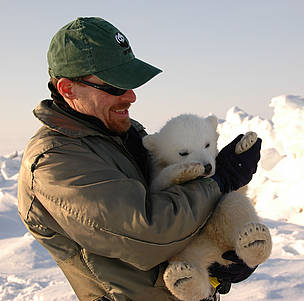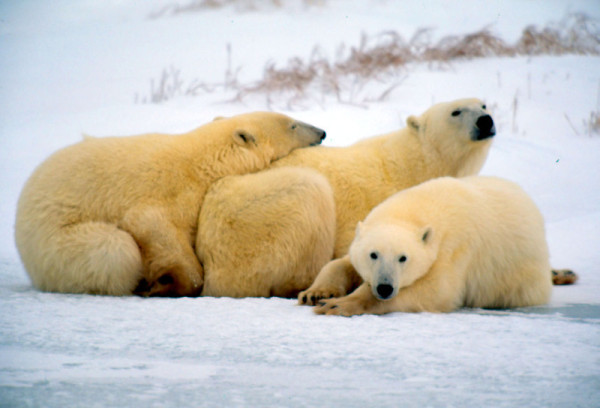Polar bears: fierce predators, loving mothers
Do you have polar bear questions? Because we have answers for Polar Bear Week (February 24-28)! Send your questions to [email protected] today, and be sure to tune in for our live Twitter Q&A on Friday, February 28 at 1 p.m. EST to get your answers!
There a lot of surprising facts about polar bear reproduction. While they mate in the spring, female bears don’t actually become pregnant until the fall – and then only if they’ve had a successful enough summer hunting season to provide the energy stores they’ll need to survive a long winter without food and nourish their cubs. This is called ‘delayed implantation’, and ensures that only the strongest, fattest females with the best chance of successfully giving birth to and raising cubs actually become mothers.
Also surprising is how they den: in southern parts of their range, they dig shallow dens in the peat of tundra banks on land and allow the snow seal them inside. Other bears dig snow caves in persistent drifts, grooming the snow inside to keep it free from ice all winter. And once they create a den, usually in October or November, they remain inside, without feeding, until March or early April.
Yet despite this long seclusion, polar bear cubs only actually gestate for about three months – they’re typically born in late December or early January – and emerge as tiny, blind, downy, helpless creatures. They spend the next two to three months consuming their mothers’ rich milk and growing by leaps and bounds. Cubs often grow from two pounds at birth (about the size of guinea pig) to 18-30 pounds when they emerge from the dens.
Once they do emerge from dens, mother bears are teachers and protectors. They keep their cubs close by and ‘clack’ at them when they wander too far. They will fight off predators – including larger male bears – and sometimes hide cubs from danger when fleeing a threat. Their dedication can even extend past their cubs’ lives: mother bears have been seen protecting dead cubs, refusing to leave them even when threats emerge.
During their 2-3 years together, the cubs mimic their mothers’ every move, learning how to hunt, swim, den, and migrate. The mother bears teach their cubs everything they need to know, until it’s time for her to mate again and potential fathers scare the grown cubs away. Then the mothers’ cycle begins again.
But all this could change, as polar bears lost the sea ice habitat that they need – the sea ice habitat that is diminishing in a warming Arctic. WWF is working to help ensure that polar bears have the Arctic home they need for a healthy future by conserving a resilient patch of sea ice high in the Arctic, the Last Ice Area. Help us help them: please give today and Coca-Cola® will match your donation dollar-for-dollar until March 15, 2014, to a maximum of $1 million USD (Canada and U.S. only).



